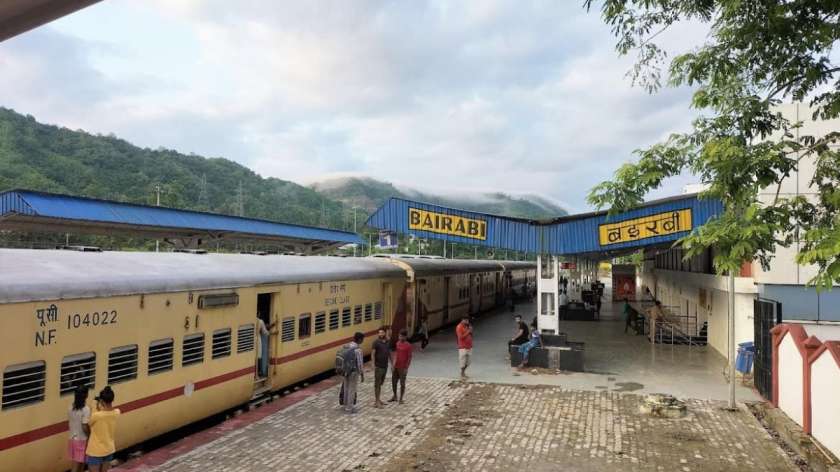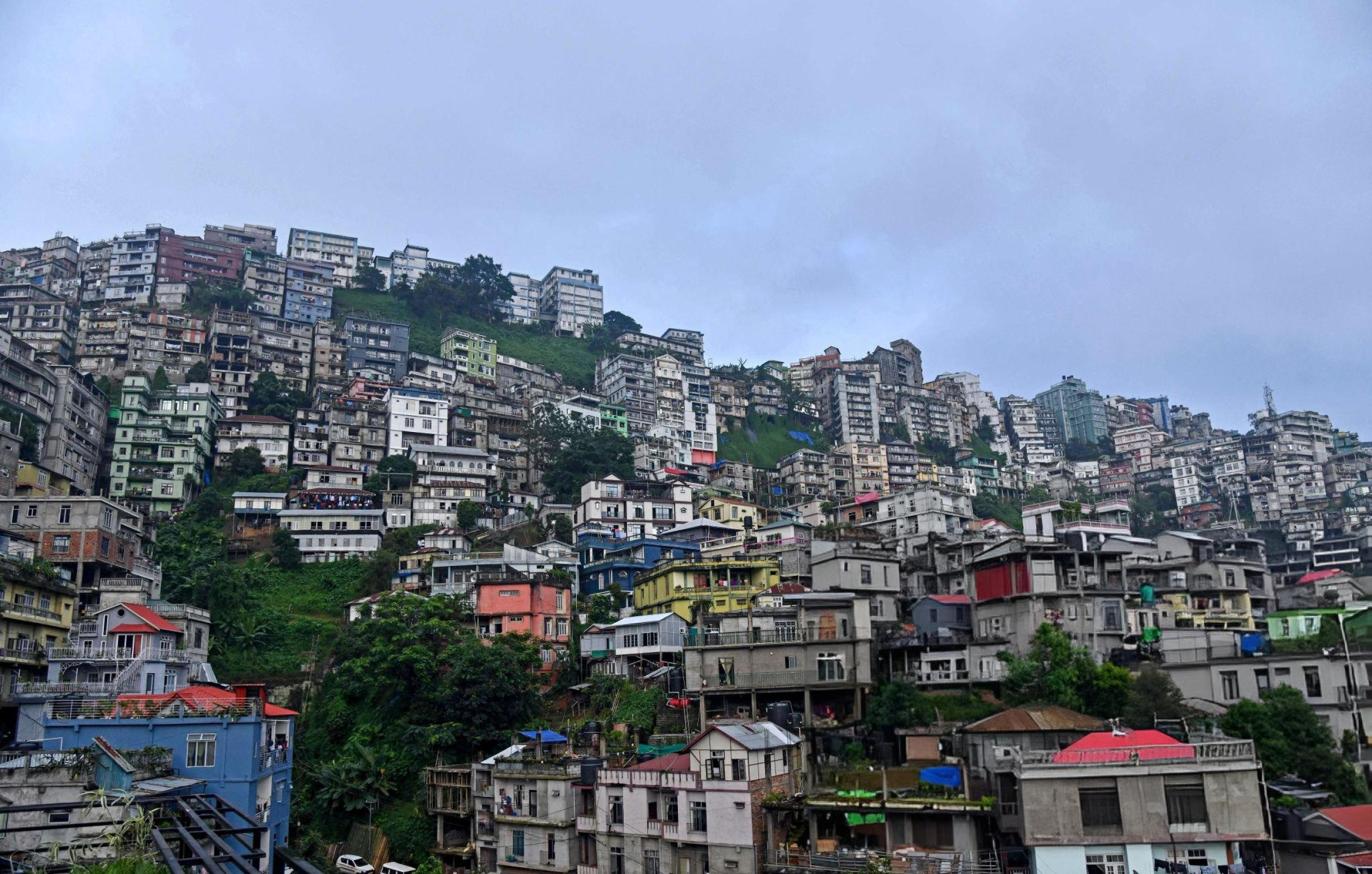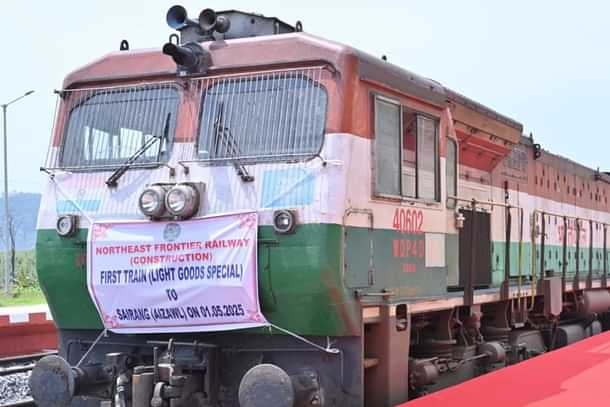In a groundbreaking move that could change the geographical and economic landscape of Mizoram, Indian Railways is on the verge of connecting the state capital, Aizawl, to the national railway grid for the very first time since independence. The 51.38-kilometre railway line from Bairabi to Sairang, located just outside Aizawl, is almost finished. While this development promises to bring jobs, growth, and easier logistics, it also raises a host of complex social, environmental, and cultural issues that the people of Mizoram are still trying to navigate. This isn’t just about a train; it marks the dawn of a new era.
The Journey to Connect
Bairabi, a quaint little town nestled in the Kolasib district, has long served as the railhead for Mizoram. Until now, anyone traveling to Aizawl had to endure a lengthy and winding journey from here. But with the new broad-gauge line connecting Bairabi to Sairang, that frustrating bottleneck is finally being tackled.

This ambitious project, led by the North East Frontier Railway, has been in the works since 2015. Originally estimated to cost around ₹2,384 crore, the budget swelled due to delays, challenges in land acquisition, and the technical hurdles posed by the region’s rugged landscape. To complete the 51.38-kilometre stretch, over 130 bridges and 23 tunnels had to be built, making it one of the most demanding railway projects in the area.
The longest tunnel stretches nearly 1.95 kilometres, and the railway line winds through steep valleys, lush forests, and areas prone to landslides, all of which required meticulous engineering and a strong commitment to ecological safety.
The Strategic Value Behind the Tracks
Mizoram stands out as one of India’s most strategically located states, boasting a 404-kilometre border with Myanmar and another 318 kilometres with Bangladesh. Until recently, its remote setting and inadequate infrastructure have hindered not only development but also India’s strategic initiatives under the Act East Policy.
Additionally, in times of geopolitical unrest or emergencies, improved railway access can facilitate troop movements and humanitarian aid. For a border state like Mizoram, having such strategic logistics is just as crucial as fostering economic growth.
Economic Potential and Local Aspirations
For the people living in Aizawl and its neighboring areas, the arrival of the railway is a long-awaited chance to transform their lives. Transporting goods from central India to Mizoram, which used to be quite costly due to reliance on roadways, is set to become much more affordable. Local agricultural products, especially ginger, turmeric, and bamboo items, will have a much easier route to reach national markets.

The construction of the railway has already created thousands of jobs in the area. Once the station and its supporting infrastructure at Sairang are up and running, there will be plenty of job opportunities in ticketing, maintenance, hospitality, and logistics. Real estate prices near the railway line have already begun to rise as people anticipate better connectivity.
Tourism is another area that stands to gain. Aizawl’s stunning hills, rich culture, and peaceful monasteries have remained largely undiscovered due to limited access. With the new rail link, travelers from Kolkata, Guwahati, and even major cities like Delhi and Mumbai will find it much easier to visit Mizoram.
However, it’s important to note that these exciting developments come with their own set of challenges.
Between Progress and Preservation
As the railway winds its way through the hills, the Mizo people find themselves grappling with a growing sense of unease. One of their biggest worries is about safeguarding their unique identity. Mizoram, a state where Christianity and tribal culture thrive alongside a rich tapestry of languages, faces the challenge of outside influences that could potentially erode their way of life.
Elders and church leaders have been particularly outspoken about the threat of cultural encroachment. Their concerns are not unfounded. With better access, there’s a chance that migration from other states could pick up speed, bringing not only economic competition but also social changes that might clash with their traditional values.
Additionally, there are worries about land acquisition and the impact on the environment. Even with government promises and compensation plans, many local communities are pushing back against forced land clearances and deforestation. Mizoram sits within the Indo-Burma biodiversity hotspot, an area already vulnerable to landslides, especially during the monsoon season. While the railway construction is designed to meet modern standards, it could still have unforeseen effects on wildlife and the ecological balance.
An environmental impact assessment carried out in 2019 raised some important concerns. Although steps have been taken to address these issues, like building retaining walls, stabilizing slopes, and launching reforestation efforts, the long-term ecological sustainability still hangs in the balance.
Political Landscape and Federal Priorities
The completion of the Bairabi–Sairang line has turned into a key issue in regional politics. The ruling party in Mizoram has framed the project as a beacon of integration and equality with the rest of India. While opposition groups aren’t against development, they are calling for more transparency regarding compensation, environmental clearances, and long-term planning. On a national level, the central government is promoting the project as part of its broader infrastructure initiative for the Northeast. Similar projects are also in the works in Arunachal Pradesh, Nagaland, and Tripura. However, critics argue that the government’s push should equally prioritize cultural preservation, social inclusion, and environmental ethics.
What Lies Ahead
Trial runs are set to kick off soon, with full operations expected to roll out in the financial year 2025–26. Once the services are up and running, Aizawl will finally have a train connection to major Indian cities via Silchar and Guwahati. This will not only transform how people travel but also revolutionize the movement of goods, the functioning of markets, and the way communities interact.
The tale of this railway line goes beyond just iron tracks and tunnels; it represents a society on the brink of change. It’s about a community that embraces progress while yearning for it to honor their heritage. This is a moment for collective reflection, will this development benefit everyone equally, or will it widen existing gaps?
Only time will reveal the answer.
For now, the sound of the train whistle echoing through the hills of Mizoram signifies more than just a new connection; it marks a pivotal moment.
For more insightful coverage, keep an eye on The Vue Times.










